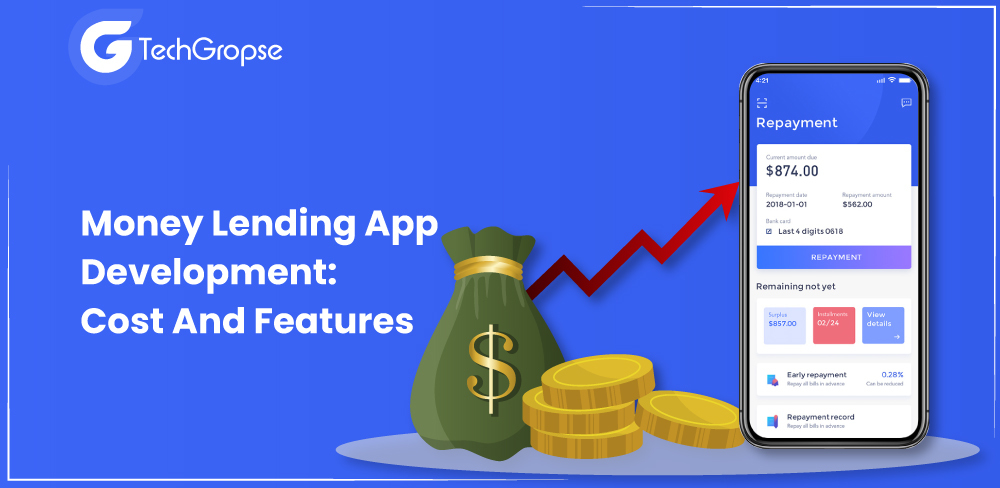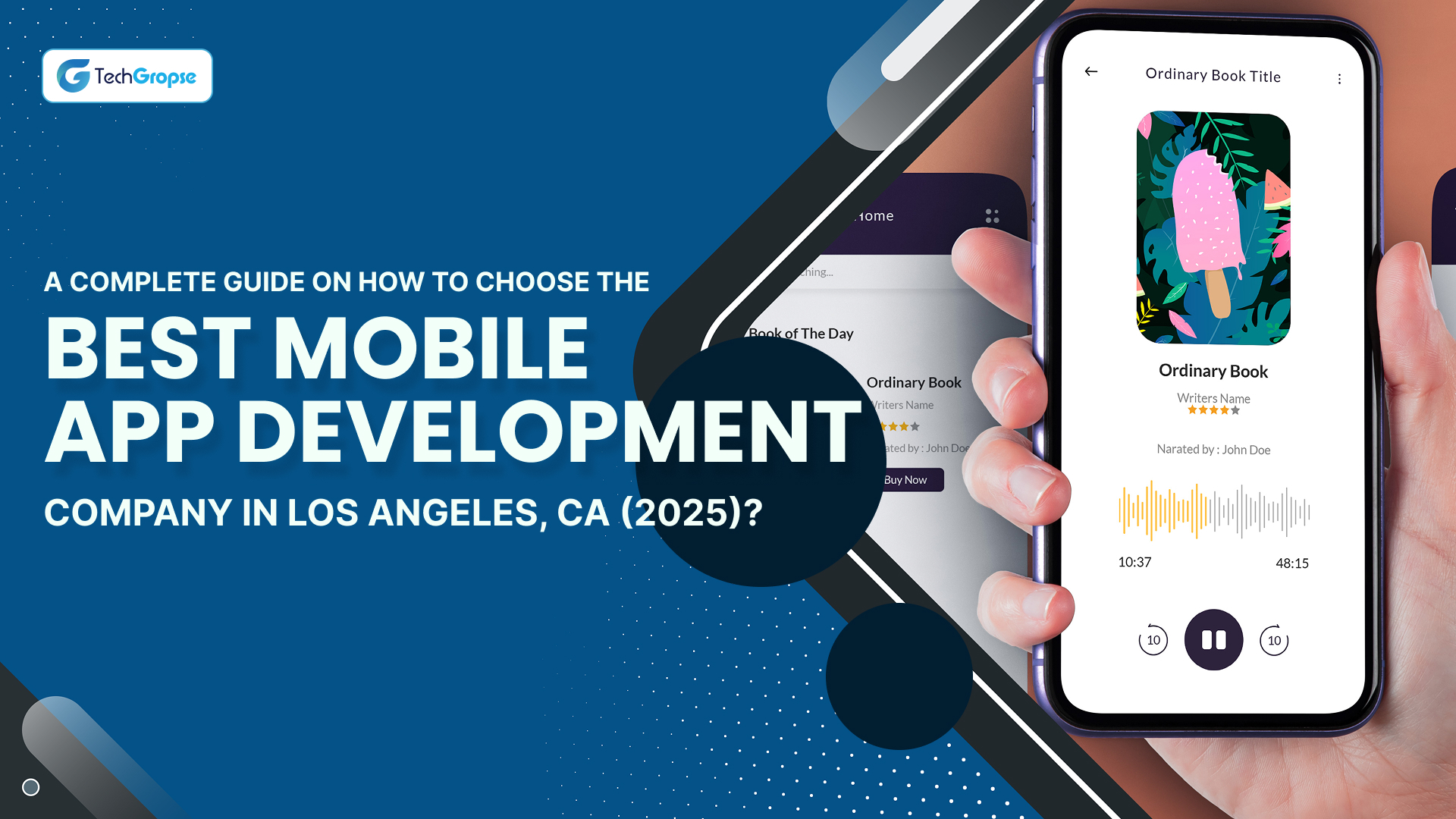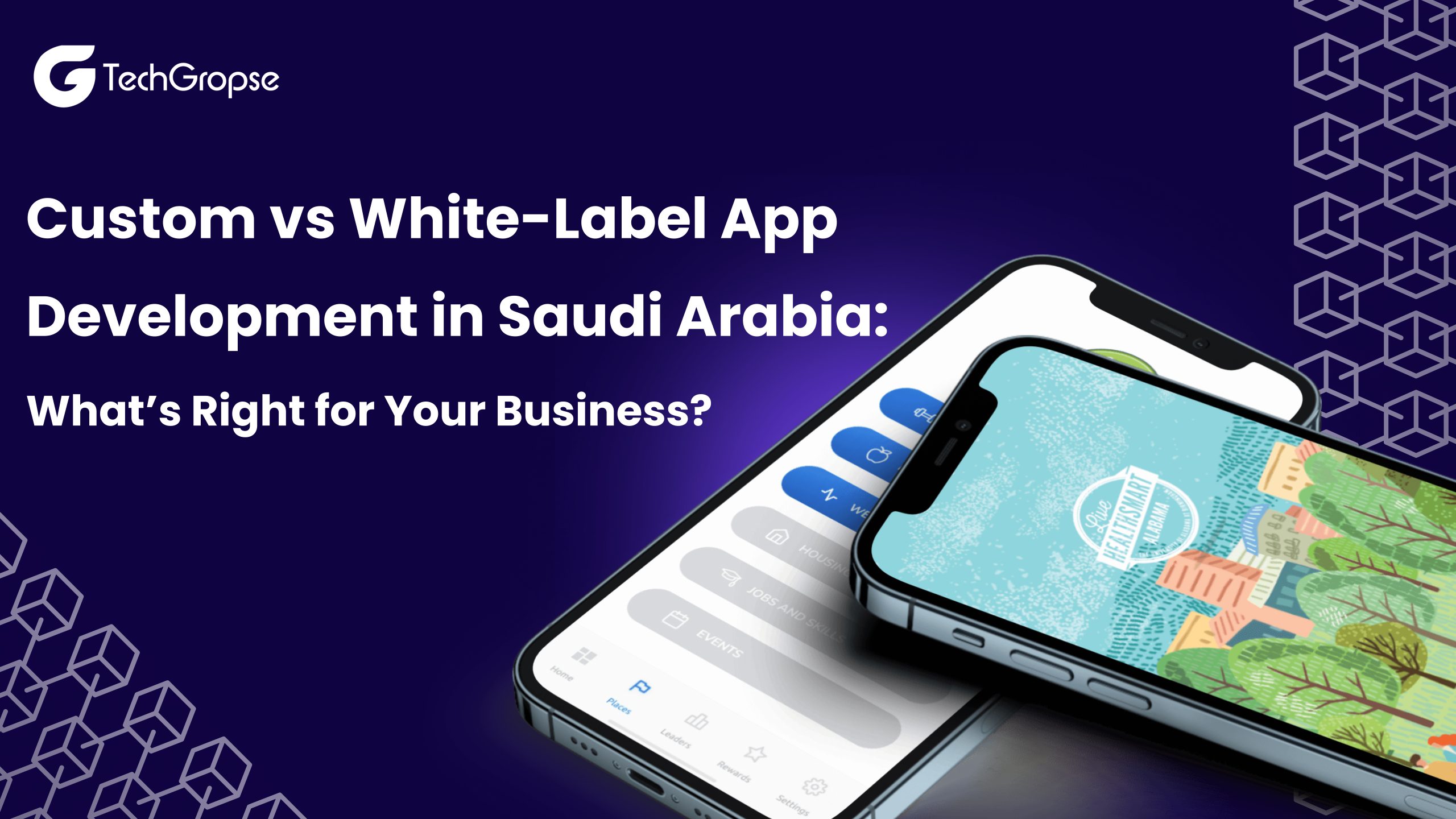Back in the day, getting a loan was a big hassle. But now, with all money lending app development, things are way more accessible. Technology has changed a lot of things, including how we borrow money.
You don’t need to stand in line for hours or go to the bank a bunch of times to get a loan anymore. You can use apps to apply for a loan and get approved quickly. These apps were made by companies that help people make smart choices about their money.
Did you know that building apps for your phone are getting easier? It’s all because of how technology is getting better. Nowadays, there are lots of on demand app development company focused to build amazing apps.
It offers various ways to borrow money online, but using loan apps is becoming really popular. It looks like they might be the best way to get a loan these days.
Before you build money lending app, you have to figure out what your business needs. Here are some essential things you should think about:
- How do I create a money lending app?
- How to build a P2P lending app?
- How do I start an online lending app?
- How does the money lending app work?
- What costs are involved in developing an app?
Let’s start to discuss all the essential details of loan lending app development, such as what they are, why they are becoming so famous, some exciting features, and how much loan lending app development costs.
What is a Money Lending Mobile App?
Money lending apps are getting more popular every year. With loan lending apps, you can borrow money anywhere, anytime without having to go to a bank or lending center. This is perfect for people who are too busy to go to the bank.
Both the people who want to borrow money and the people who want to lend money use the app. They don’t require any fancy buildings or workers to make it happen. It’s super easy!
All they have to do is agree on the same rules before the person who requires money gets their cash.
Using money lending app development is an outstanding way to make your business more successful, whether you are just starting out or you already have a regular bank.
It helps you connect with people in lots of different ways. But if you don’t use a money lending app, you might miss out on some important business opportunities that could help your company grow.
Key Statistics of Money Lending App Development
Did you know that lots of people use loan apps to borrow money? So, there’s this report that says digital lending platforms are becoming popular all around the world.
- In 2019, they were worth $5.58 billion, which is a lot of money.
- By 2027, they are expected to be worth $20.31 billion.
- It’s growing at a rate of 16.7% every year between 2020 and 2027. So, if you are interested in finance and technology, this might be something to keep an eye on!
- More than 30% of people who use online banking use these apps at least once a month.
- They are becoming so popular that they’re starting to replace traditional loans. The biggest company that gives out personal loans in the U.S. is called FinTech.
- And get this – experts think that by 2028, the market for these apps will be worth $20.5 billion!
That’s a lot of money!
Evolution of Money Lending Apps
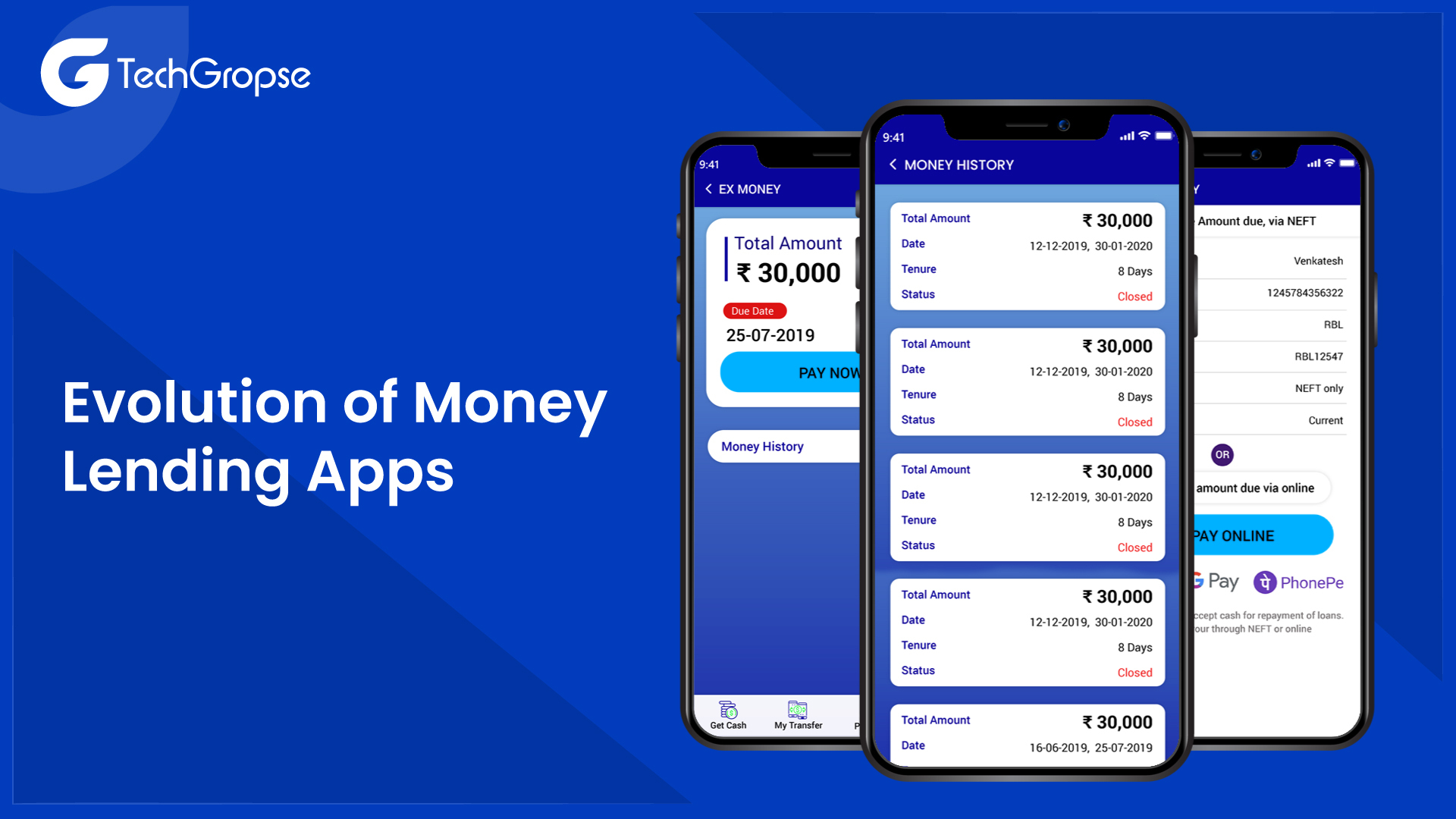
The first-generation money lending apps were founded in the late 2000s, and they were meant to provide quick loans to users. Since then, money-lending apps have been evolving, and today we have many different types of money-lending apps.
Some apps specialize in providing loans to people with bad credit or no credit, while others offer loans for specific purposes like education or home renovation.
| Evolutionary Stage | Key Features and Advancements |
| Peer-to-Peer Lending | The emergence of platforms connecting borrowers directly with lenders. |
| Mobile-First Approach | Shift towards mobile platforms for convenient access to loan services. |
| Streamlined Application Process | Digitization of the application process, reducing paperwork. |
| Credit Scoring and Risk Assessment | Algorithms and data analytics are used to assess creditworthiness. |
| Integration with Financial Services | Addition of features like digital wallets, bill payments, and investments. |
| Collaboration with Traditional Institutions | Partnerships with banks and credit unions for stability and regulation. |
| Emphasis on Financial Inclusion | Focusing on underserved populations and providing easier access to credit. |
| Enhanced Security and Privacy | Robust security standers and compliance with data security regulations. |
| Integration of Blockchain and Cryptocurrencies | Exploring decentralized lending platforms and alternative collateral. |
| Improved User Experience | Intuitive interfaces, personalized recommendations, and seamless transactions. |
Types Of Money Lending Apps
There are different types of money lending apps available in the market catering to different borrowing requirements and target audiences.
Here are some common types of money lending apps:
1. Peer-to-Peer (P2P) Lending Apps
P2P lending apps connect individual borrowers with individual lenders, cutting out the traditional financial institution as an intermediary. These apps encourage lending transactions between individuals, allowing borrowers to access loans and lenders to earn interest on their investments.
2. Personal Loan Apps
It focuses on delivering secured personal loans to individuals for different purposes, like home improvement, medical expenses, debt consolidation, or education.
3. Microloan Apps
It specializes in providing small, short-term loans, often in the range of a few hundred dollars. These loans are typically meant to address immediate financial needs, such as emergency expenses or bridging gaps between paychecks.
4. Payday Loan Apps
Loan apps offer short-term loans to borrowers who need funds until their next payday. These loans are usually meant for urgent and immediate cash needs but often come with higher interest rates and fees.
5. Business Loan Apps
It caters specifically to entrepreneurs and small business owners, providing funding for business expansion, working capital, equipment purchase, or other business-related needs.
6. Student Loan Apps
Apps focus on providing loans for educational purposes, such as tuition fees, books, or living expenses for students. These apps may offer flexible repayment options and specific features catering to student borrowers.
What Model to Choose for Your Money Lending App Development?
When choosing a development model for your money lending app development services, you have several options to consider. The choice depends on your specific needs, budget, timeline, and flexibility.
Here are three common development models to consider:
Waterfall Model
The Waterfall model follows a sequential and linear approach to development. It involves distinct phases, such as requirements gathering, design, development, and testing. This model is appropriate when the project needs are well-defined and unlikely to change significantly during the development process. It is also appropriate if you have a fixed budget and timeline.
Agile Model
The Agile model is an iterative and collaborative approach to development. It involves breaking the project into smaller increments called sprints, with each sprint delivering a functional portion of the app. This model allows for flexibility, as needs can evolve and adapt throughout the development process.
Hybrid Model
The Hybrid model combines elements of both Waterfall and Agile methodologies. It incorporates the structured and sequential approach of Waterfall for planning and initial development phases, while also incorporating Agile principles for subsequent iterations and updates.
How Does The Money Lending App Work?
A money lending app is a digital platform that connects borrowers with lenders. With the help of these apps, anyone can submit a loan request, and the lender can go through the request and approve or reject the application.
Follow the steps given below:
Step 1: First, you have to download the app on your smartphone. You can get it from the App Store if you have an iPhone or from the Google Play Store if you have an Android.
Step 2: Once you have the app, you need to sign up.
Step 3: There’s one more important step called KYC, but don’t worry about that for now.
Step 4: Now it’s time to explore the app and see what kind of loans you can apply for. You will need to submit some documents to prove you can pay back the loan.
Step 5: After you apply, some experts will check your details to make sure you are eligible for the loan. This can take a little while.
Step 6: If you are approved, the money will be sent to your account. You can use it for whatever you need.
Step 7: But remember, this is a loan, so you must pay it back. You can do it all at once or pay it back in smaller amounts over time.
That’s it! Now you know how loan-lending apps work.
Why is Money Lending App Development Popular in the Market?
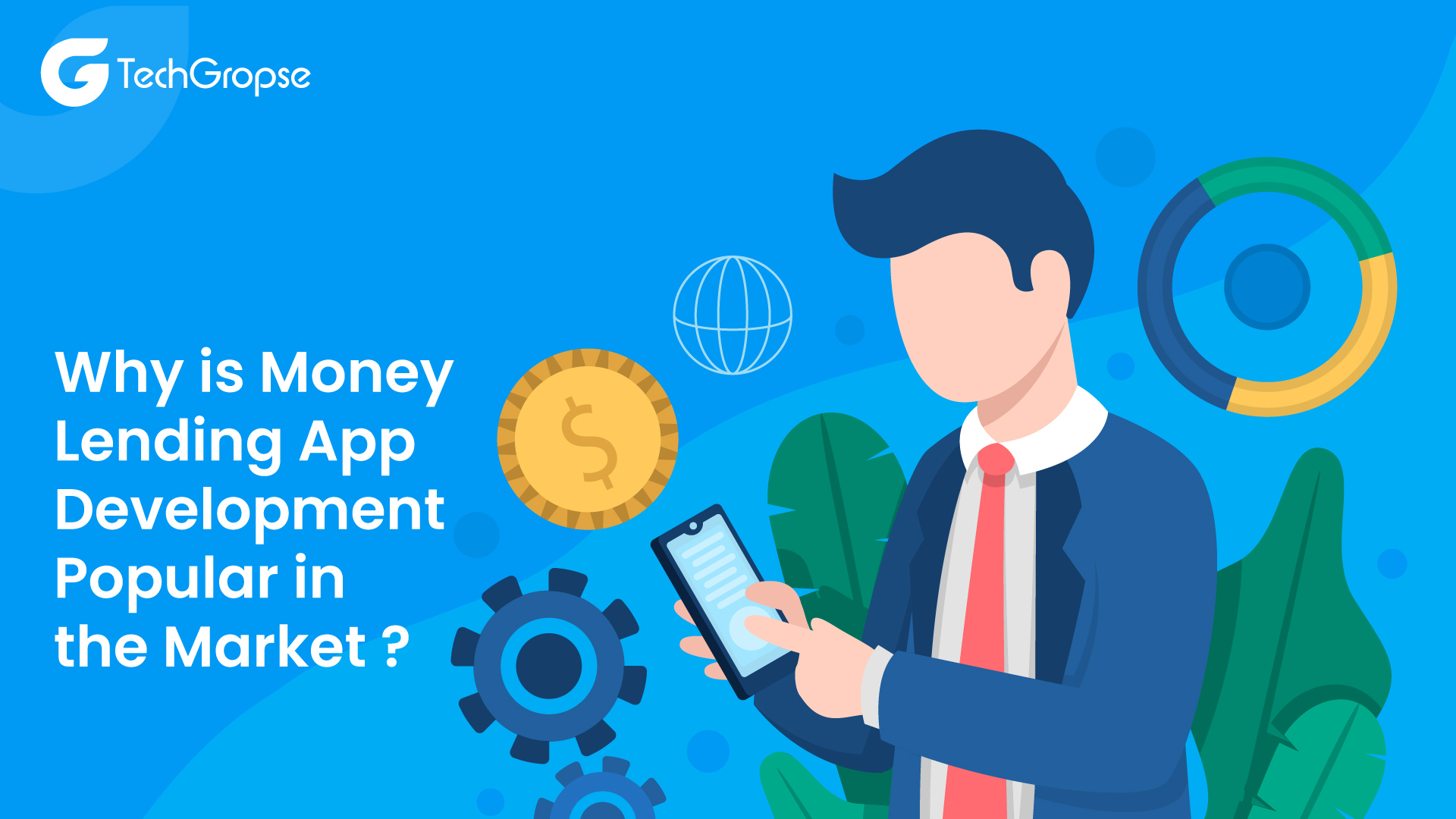
Money lending apps have gained significant popularity and demand for several reasons:
1. Convenience
It offers a high level of convenience compared to traditional lending institutions. Users can apply for loans, submit documentation, and manage their loans entirely through a mobile app. It eliminates the need for physical visits to a bank or lender.
2. Quick Approval and Disbursement
Money lending apps typically have simplified processes and advanced algorithms for credit assessment. This allows for faster loan approvals and disbursals, enabling users to access funds fast, often within hours or even minutes.
3. Accessibility and Inclusion
Mobile application development company building money lending apps that work to bridge the gap in accessing credit for individuals who may have limited or no access to traditional financial institutions. These apps often have more flexible eligibility criteria and consider alternative factors for credit assessment.
4. Personalization and Competitive Rates
Money lending apps leverage technology and data analytics to personalize loan offers based on individual profiles. This outcome in more tailored interest rates, loan terms, and repayment options. Additionally, the competitive market among money lending apps drives competitive interest rates and terms, benefiting borrowers.
5. Transparent and Fair Practices
Money lending apps often emphasize transparency in their processes and loan terms. They provide clear information regarding interest rates, fees, and repayment schedules upfront, helping users make informed decisions.
6. Financial Management Tools
Money lending apps often offer additional financial management features such as budgeting tools, transaction tracking, and credit monitoring. These tools help users manage their finances effectively and make informed decisions about borrowing and repayment.
7. Technological Advancements
Money lending apps leverage technology innovations such as artificial intelligence, machine learning, and digital payment systems. These advancements enable efficient loan processing, enhanced security measures, and seamless user experiences, attracting users who value modern and tech-savvy financial solutions.
Essential Functionalities & Features of Money-Lending Apps
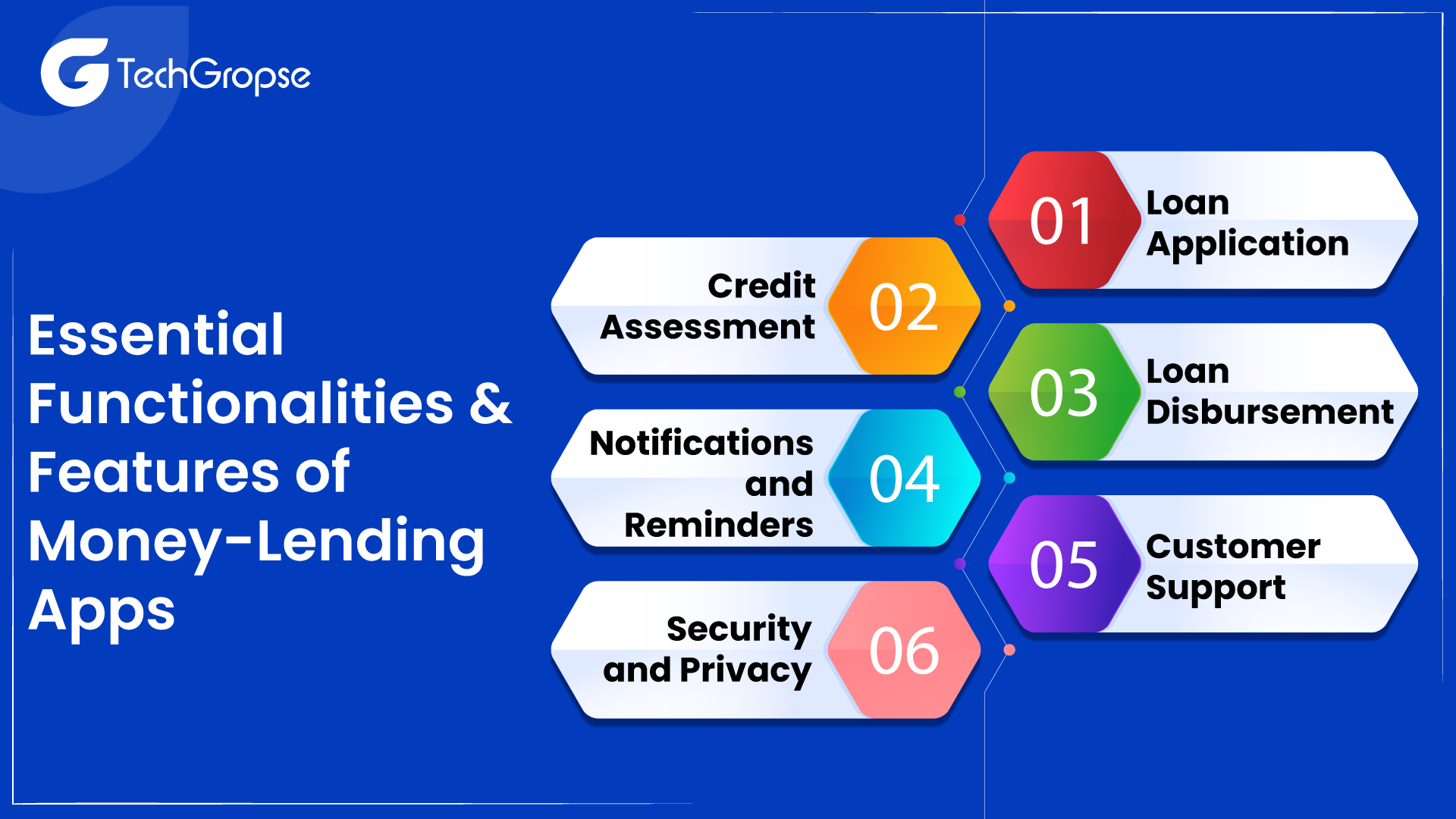
Money lending app development company make amazing apps that offer a range of functionalities to satisfy the borrowing and financial management needs of their users.
Here are some major functionalities commonly found in money lending apps:
- Loan Application: Users can apply for loans directly through the app. They provide the necessary information, such as loan amount, purpose, and supporting documents, to initiate the loan application process.
- Credit Assessment: Money lending apps employ algorithms and data analytics to assess the creditworthiness of applicants. They analyze factors such as credit history, income, employment stability, and other relevant data to determine loan eligibility and interest rates.
- Loan Offers and Comparison: Money lending apps present users with loan offers based on their credit assessment. Users can compare different loan options, including loan amounts, interest rates, repayment terms, and fees, to make an informed decision.
- Loan Disbursement: Once a loan is approved, money lending apps facilitate the disbursement of funds to the user’s bank account or integrated digital wallet. They handle the transfer process securely and efficiently.
- Repayment Management: Money lending apps provide features for users to manage their loan repayments. This includes viewing the repayment schedule, setting up automatic payments, tracking payment history, and making manual repayments directly through the app.
- Account Management: Users can manage their personal information, contact details, and preferences within the app. They can also view their loan details, including outstanding balance, interest accrued, and the remaining repayment period.
- Notifications and Reminders: Money lending apps send notifications and reminders to users regarding upcoming loan payments, payment due dates, and other important information related to their loans.
- Financial Tools and Calculators: Many money lending apps offer financial tools and calculators to help users plan their finances. These tools may include loan calculators, budgeting features, debt management tools, and credit score monitoring.
- Customer Support: Money lending apps provide customer support channels to assist users with their loan-related queries, account issues, or general assistance. Support may be available through in-app messaging, email, or phone.
- Security and Privacy: Money lending apps prioritize the security and privacy of user data. They implement robust security measures, such as encryption, two-factor authentication, and compliance with data protection regulations, to protect user information.
The Cost of Developing a Money Lending App
Providing an exact cost of developing a money lending app without specific project details is challenging.
However, money lending app development company provide you with a general cost breakdown based on the components involved in money lending app development.
| Development Component | Cost Range | Description |
| App Design | $5,000 – $20,000 | The level of customization and complexity required for the app’s design and user experience. |
| Development Platform | Varies based on platform (e.g., $10,000 – $30,000 for iOS or Android) | The choice between native or cross-platform development for iOS, Android, or both. |
| Features and Functionalities | $15,000 – $50,000+ | The number and complexity of features desired in the app. |
| Backend Development | $20,000 – $50,000+ | The complexity and scalability requirements of the backend system. |
| Third-Party Integrations | $5,000 – $20,000+ | The number and complexity of integrations with external services like payment gateways. |
| Security and Compliance | $5,000 – $15,000+ | The implementation of strong security measures and compliance with data protection regulations. |
| Testing and Quality Assurance | $5,000 – $15,000+ | The depth and extent of testing required to ensure a reliable and smooth app experience. |
| Maintenance and Updates | Vary based on the scope and duration of the maintenance agreement | The frequency and scope of ongoing maintenance, bug fixes, and updates after the app launch. |
Please note that these estimates are rough ranges and can vary significantly based on project scope and needs. You must hire mobile developers to know details about the project.
Final Thought
Money lending app development offers enormous potential for businesses and entrepreneurs looking to tap into the rapidly growing fintech market.
By understanding the key features, costs, and best practices for creating a money-lending app, you can make an app that fulfills the requirements of borrowers and lenders alike.
With the right monetization strategies and a focus on security and compliance, a money lending app can be an impactful addition to the fintech landscape.
FAQ
1. What are the essential features of a money lending app?
Key features of a money lending app include user authentication and onboarding, loan request and approval process, payment and transaction management, and data analytics and reporting.
2. How much does it cost to develop a money lending app?
The cost of developing a money lending app varies depending on several factors, such as the platform and technology used, design and user interface, third-party integrations, and team structure and expertise. On average, the cost can range from $50,000 to $150,000.
3. What are the best practices for money lending app development?
Best practices for money lending app development include prioritizing security and data privacy, focusing on user experience and customer support, and ensuring compliance with regulatory standards.
4. What are the monetization strategies for money lending apps?
Monetization strategies for money lending apps include interest and fees, advertising and sponsorship, and referral and affiliate programs.






